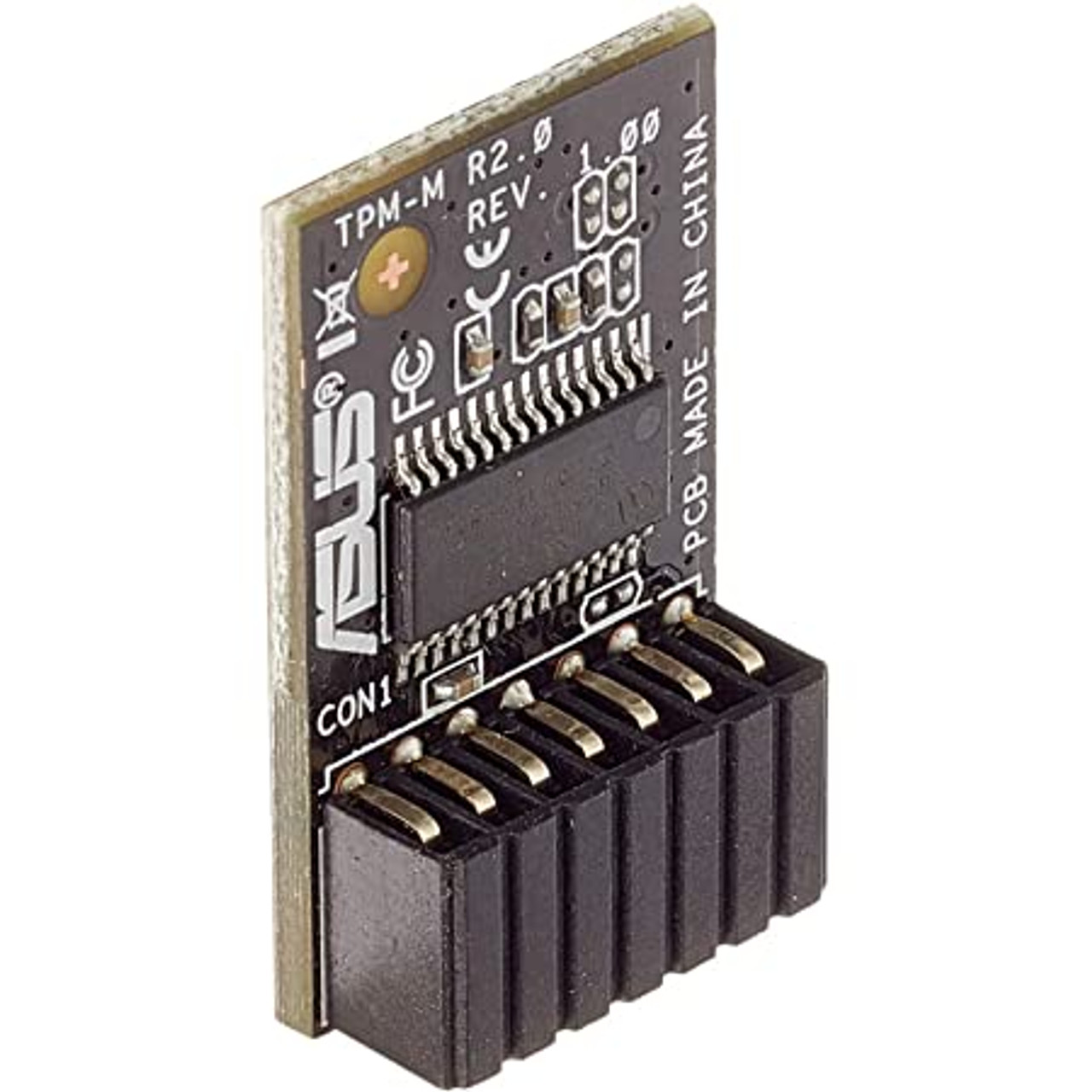Product Description
ASUS TPM-M R2.0 14-1 Pin TPM Module
The ASUS TPM-M R2.0 14-1 Pin TPM Module is a hardware security device that provides a secure platform for storing sensitive information such as encryption keys, digital certificates, and passwords. The TPM-M R2.0 is compliant with the Trusted Computing Group (TCG) TPM 2.0 standard and is designed to protect against unauthorized access to sensitive data.
The TPM-M R2.0 is a small, self-contained module that can be easily installed in a variety of systems. It is compatible with a wide range of platforms, including desktops, laptops, and servers. The TPM-M R2.0 is also supported by a variety of operating systems, including Windows, Linux, and macOS.
The TPM-M R2.0 provides a number of security features that can help to protect your data from unauthorized access. These features include:
- Secure boot: The TPM-M R2.0 can be used to verify the integrity of the boot process, ensuring that only trusted software is loaded.
- Credential storage: The TPM-M R2.0 can be used to store encryption keys, digital certificates, and passwords in a secure manner.
- Remote attestation: The TPM-M R2.0 can be used to generate a cryptographic attestation that can be used to verify the integrity of the system.
The ASUS TPM-M R2.0 is a valuable security tool that can help to protect your data from unauthorized access. If you are looking for a secure way to store sensitive information, the TPM-M R2.0 is a great option.
Features:
- Compliant with the Trusted Computing Group (TCG) TPM 2.0 standard
- Small, self-contained module that can be easily installed
- Compatible with a wide range of platforms
- Supported by a variety of operating systems
- Provides a number of security features that can help to protect your data from unauthorized access
Benefits:
- Protects sensitive information from unauthorized access
- Verifies the integrity of the boot process
- Stores encryption keys, digital certificates, and passwords in a secure manner
- Generates a cryptographic attestation that can be used to verify the integrity of the system
 US Dollars
US Dollars
 United Arab Emirates Dirham
United Arab Emirates Dirham
 Euro
Euro
 British Pound
British Pound
 Turkish Lira
Turkish Lira
 Canadian Dollar
Canadian Dollar
 South African Rand
South African Rand
 Indian Rupee
Indian Rupee
 Brazilian Real
Brazilian Real
 Indonesian Rupiah
Indonesian Rupiah
 Singapore Dollar
Singapore Dollar
 South Korean Won
South Korean Won
 Japanese Yen
Japanese Yen
 Chinese Yuan
Chinese Yuan
 Mexican Peso
Mexican Peso
 Qatari Rial
Qatari Rial
 Saudi Riyal
Saudi Riyal
















